Regrout Tile Countertops for a Fresh Look
Tile countertops offer durability and versatility, making them a popular choice for kitchens. Over time, however, the grout between tiles can become discolored, cracked, or mildewed, detracting from the overall appearance of the countertop. Regrouting tile kitchen countertops is a cost-effective way to breathe new life into your kitchen space, restoring the beauty and functionality of the surface. In this comprehensive guide, we’ll explore the process, benefits, considerations, and tips for regrouting tile countertops.

Understanding the Regrouting Process
Regrouting tile countertops involves removing the old grout and replacing it with fresh grout to rejuvenate the surface. The process typically includes the following steps:
Preparation: Begin by thoroughly cleaning the tile countertop surface to remove any dirt, grease, or debris. Use a mild detergent and warm water, followed by a grout cleaner or a mixture of vinegar and baking soda for stubborn stains. Allow the countertop to dry completely before proceeding.
Removing Old Grout: Use a grout saw or rotary tool with a grout removal attachment to carefully remove the old grout from between the tiles. Take care not to damage the tiles themselves during this process. Work systematically, focusing on one section of the countertop at a time.
Cleaning and Prepping Tiles: Once the old grout has been removed, clean the tile surface again to remove any remaining grout dust or residue. Wipe down the tiles with a damp sponge or cloth and allow them to dry thoroughly before applying the new grout.
Applying New Grout: Mix the new grout according to the manufacturer’s instructions, ensuring a smooth and uniform consistency. Use a grout float to apply the grout to the tile joints, pressing it firmly into place. Work in small sections, removing excess grout with the float as you go.
Finishing and Sealing: After applying the new grout, use a damp sponge to remove any haze or excess grout from the tile surface. Once the grout has cured according to the manufacturer’s recommendations, apply a grout sealer to protect the surface and prevent future staining or mildew growth.
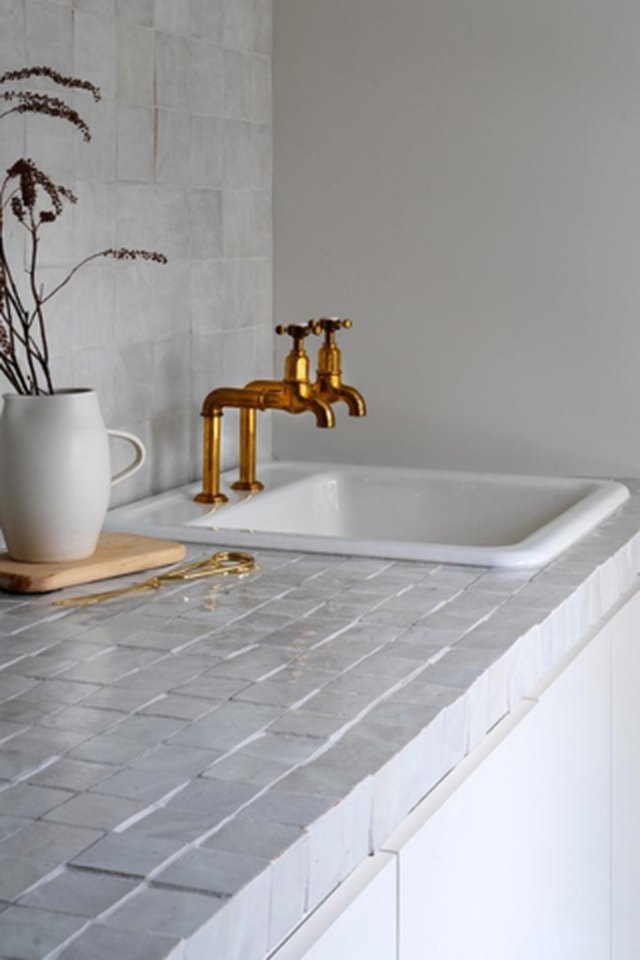
Benefits of Regrouting Tile Countertops
Regrouting tile countertops offers several benefits, both aesthetically and functionally, including:
Improved Appearance: Fresh grout can dramatically improve the appearance of tile countertops, giving them a cleaner, more polished look. By eliminating stains, discoloration, and cracks, regrouting restores the original beauty of the surface.
Enhanced Durability: Properly sealed and maintained grout helps protect the integrity of the tile countertop, preventing moisture penetration, mold growth, and tile displacement. Regrouting reinforces the structural stability of the surface, prolonging its lifespan.
Cost-effectiveness: Regrouting tile countertops is a cost-effective alternative to replacing the entire surface. By addressing issues such as cracked or deteriorated grout, homeowners can avoid the expense and inconvenience of a full countertop replacement.
Customization Options: When regrouting tile countertops, homeowners have the opportunity to choose from a wide range of grout colors, allowing for customization and personalization to match the kitchen’s décor and design scheme.

Considerations Before Regrouting
Before embarking on the regrouting process, homeowners should consider the following factors:
Tile Condition: Assess the condition of the existing tile countertop to determine if regrouting is the best solution. If the tiles are cracked, chipped, or otherwise damaged, replacement may be necessary instead of regrouting.
Grout Type: Identify the type of grout used in the original installation, as different grout formulations require specific removal and application techniques. Consult with a professional if you’re unsure about the type of grout or the regrouting process.
Time and Skill Level: Regrouting tile countertops can be a time-consuming and labor-intensive task, particularly for larger surfaces or intricate tile patterns. Consider your skill level and availability before undertaking the project, and don’t hesitate to seek professional assistance if needed.
Sealing and Maintenance: Once the regrouting is complete, it’s essential to seal the new grout to protect it from stains, moisture, and mold growth. Follow the manufacturer’s recommendations for sealing and establish a regular maintenance routine to preserve the integrity of the countertop.

Common Mistakes to Avoid
Incomplete Grout Removal: Failing to remove all of the old grout from between the tiles can result in uneven or lumpy grout lines. Take the time to thoroughly clean out the old grout before applying the new grout for a smooth and uniform finish.
Incorrect Grout Mixing: Improperly mixed grout can lead to weak bonds, color inconsistencies, or premature cracking. Follow the manufacturer’s instructions carefully when mixing the grout to ensure a proper consistency and color match.
Overlooking Sealing: Neglecting to seal the new grout leaves it vulnerable to staining, moisture penetration, and mildew growth. Apply a high-quality grout sealer after the grout has cured to protect the surface and prolong its lifespan.
Rushing the Process: Regrouting tile countertops requires patience, precision, and attention to detail. Rushing through the process can result in sloppy workmanship, uneven grout lines, or damage to the tiles. Take your time and work methodically to achieve professional results.
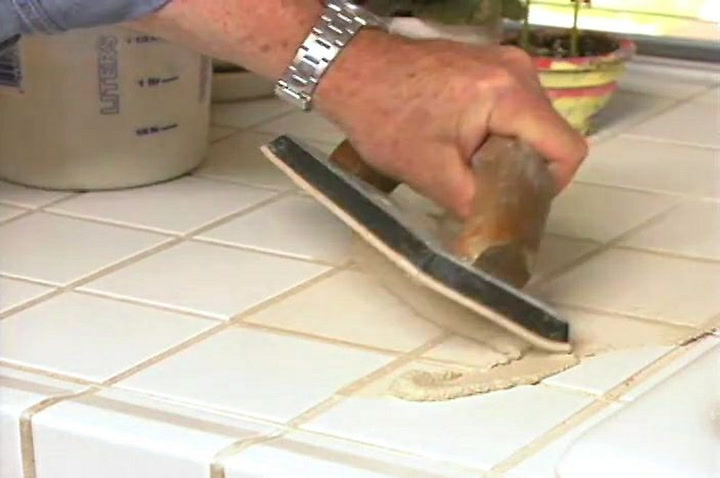
How long does regrouting tile countertops take?
The time required to regrout tile countertops depends on factors such as the size of the surface, the complexity of the tile pattern, and the condition of the existing grout. On average, regrouting a standard-sized kitchen countertop can take anywhere from a few hours to a full day.
Can any type of grout be used for regrouting tile countertops?
It’s essential to use a grout that is compatible with the type of tile and the specific requirements of the countertop surface. Consult with a professional or refer to the manufacturer’s recommendations to select the appropriate grout for regrouting.
How often should tile countertops be regrouted?
The frequency of regrouting tile countertops depends on factors such as usage, maintenance, and the quality of the original grout installation. In general, tile countertops may need to be regrouted every 5 to 10 years to maintain their appearance and integrity.
Can I regrout tile countertops myself, or should I hire a professional?
Regrouting tile countertops can be a DIY project for homeowners with the necessary skills, tools, and patience. However, if you’re unsure about the process or if the countertop requires extensive repairs, it’s best to hire a professional contractor who specializes in tile work.
Will regrouting tile countertops disrupt my kitchen routine?
Regrouting tile countertops may cause temporary inconvenience, as access to the kitchen area may be limited during the regrouting process. Plan accordingly by removing any items from the countertop surface and making alternative arrangements for meal preparation if necessary.
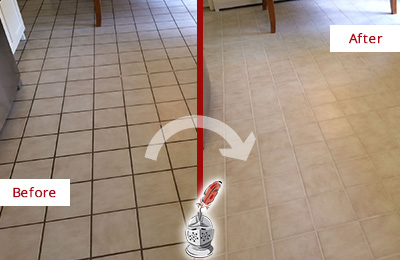
Blue Tiles on Kitchen Countertop (Regrouting Service)
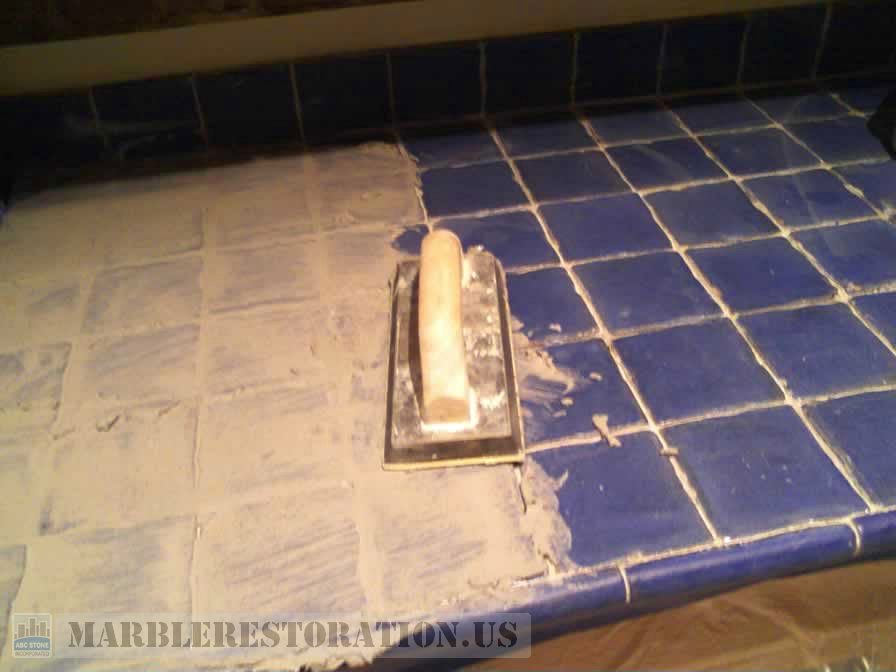
Regrouting Kitchen Tiles
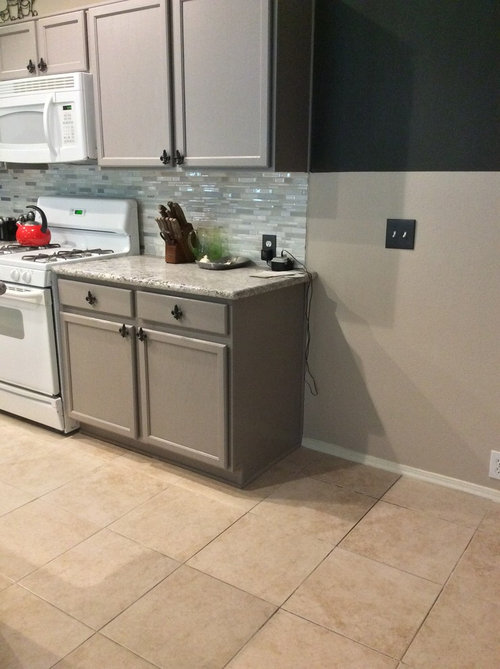
How to Replace Grout with Caulk on a Kitchen Tile Backsplash – Caulking Kitchen Countertop

How To Regrout Ceramic Tile on Kitchen Counters

Related articles:
- Kitchen Countertop Design
- Durable Kitchen Countertops
- Cheap Kitchen Countertop Ideas
- Kitchen Countertop Ideas
- Unique Kitchen Countertop Ideas
- Budget Kitchen Countertops
- Wood Kitchen Countertops
- Formica Kitchen Countertop Ideas
- White Granite Kitchen Countertops
- DIY Kitchen Countertops